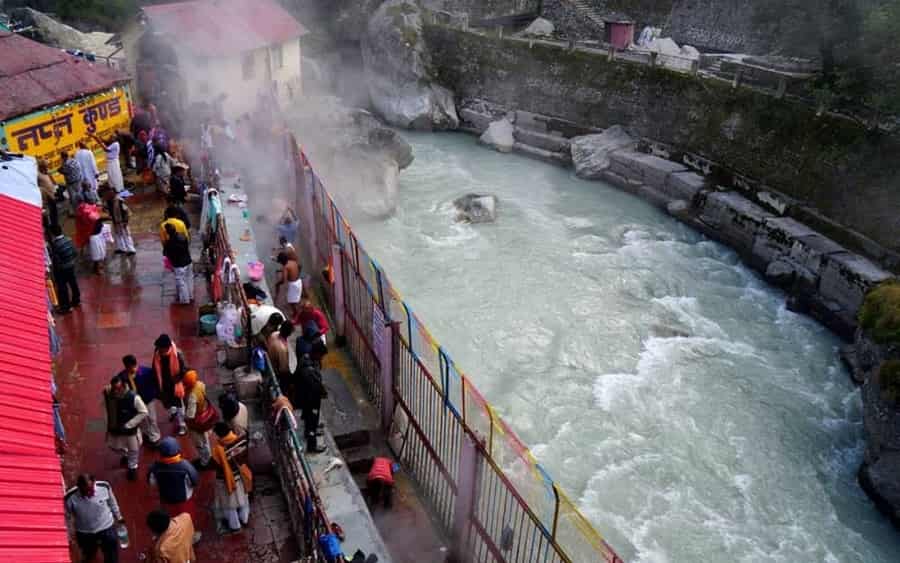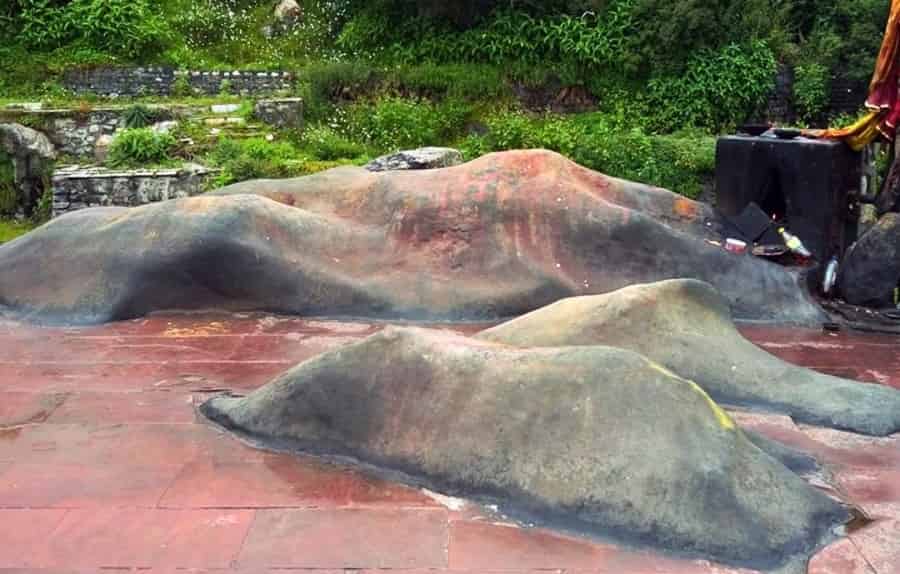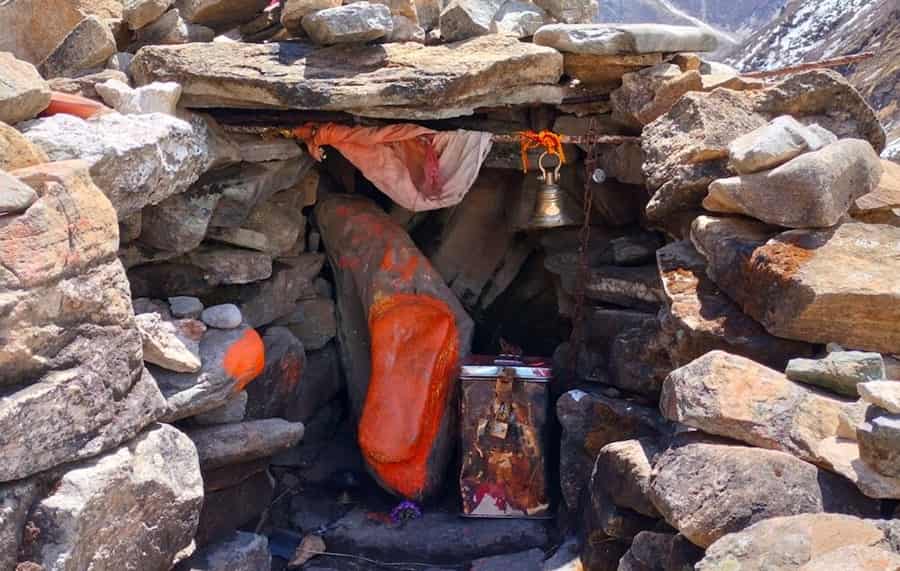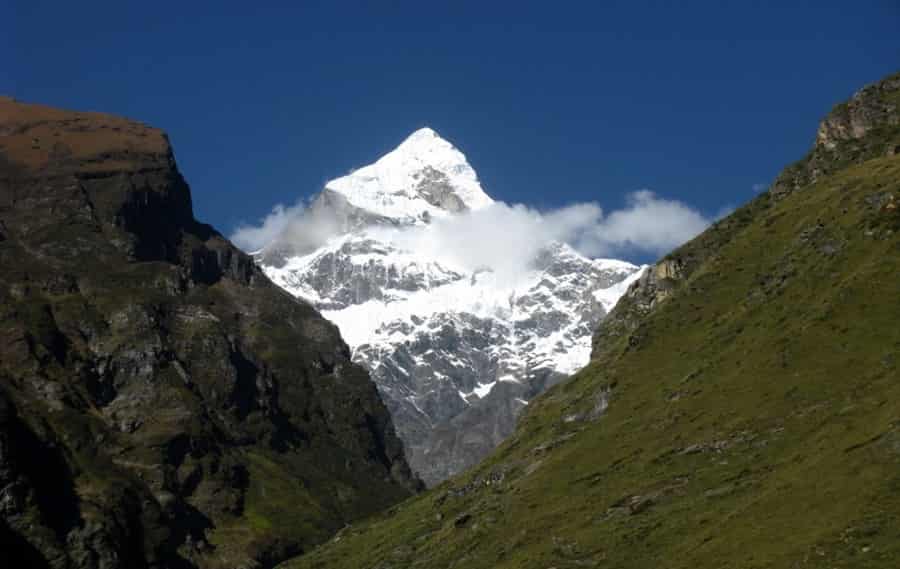Last Updated on February 24, 2025
The altitude location of this holy pilgrimage is about 3,133 meters above sea level and is in the middle of the delightful valley. Badrinath temple is situated on the religious Alaknanda River’s right bank. This spiritual Badrinath temple is committed to Lord Vishnu. There is also an individual temple which is dedicated to Shri Badrinathji, the height of this temple is about fifteen meters. The temple is made in the size of a cone, which also has a spire and gilt bull. This historical Badrinath temple was established in the earlier Vedic age. Thus, the current Badrinath temple was built in the eighth century, by the great Adi Shankaracharya, who was a reformist of the Hindus. This temple was renovated many times because this temple had much damage, which was done by the avalanches but now it looks very beautiful and modern because of the use of many colors on the entrance gate or which is also called ‘Singh Dwara’. Badrinath temple is divided into 3 different parts such as Darshan Mandap, Garbha Griha, and Shodhaa Mandap.
There is a mythological history behind the idol of Shri Badrinath. During the Buddhist period, the Badrinath idol was thrown in the River Alaknanda. After some years it was rediscovered and Adi Shankaracharya reinstalled this idol, during the Hindu revival. In the Badrinath temple, there are fifteen idols, which are very elegantly sculpted using black color stone, the idol of the Badrinath is a very highly sculpted idol. Other idols are Garuda, Ganesh, Laxmi, Parvati, and Shiva. With this temple’s delightful beauty, you can also see many recreated attractive spots which are situated in the nearby locations. Each year millions of tourists and devotees are attracted by this pilgrimage place.
Some Nearby Visiting Religious Places
Tapt Kund

Over Alaknanda River’s bank, you will get to see the thermal springs which are naturally created. As per the customs of Hindu tradition, before entering the temple of Badrinath, you have to take a bath in the water of this river.
Panch Dharas
Panch Dharas contain 1) Bhrigu Dhara 2) Prahlad Dhara 3) Indra Dhara 4) Urbasi Dhara 5) Kurma Dhara
Narad Kund
The opening of the river is close to the Tapt Kund. This is a discovered pool and the idol of the Shri Badrinath was founded in this Narad Kund.
Brahma Kapal

This is a flat platform which is located on the Alaknanda River’s bank. As per the Hindu religion, Hindu people practice the propitiating rites for their dead blood relatives.
Panch Shilas
Pansh Shilas means 5 Shilas such as 1) Markandeya Shila 2) Varah Shila 3) Narsingh Shila 4) Narad Shila and 5) Garurh Shila
Charan Paduka

Charanpaduka is about three kilometers away. This place is surrounded by a very beautiful grassland, at this place Lord Vishnu’s footprints were found on the bedrock.
Sheshnetra
This place is around one and a half kilometers away and this Sheshnetra has a sculpted image of the historical snake, Sheshnag’s eye, and is famous by this name as well.
Neelkanth

This is a peak that has the shape of a pyramid; the height of this peak is about 6,597 meters. Badrinath temple is situated at its peak, which will give you a dramatic view. This is a famous place by the name of the Garhwal Queen.
Four Badris
Bhavishya Badri
The Bhavishya Badri temple is at a height of two thousand seven hundred and forty-four meters. This temple is situated in the surrounding of a large forest area. Bhavishya Badri temple is situated at the Subhain which is close to the Tapovan, Joshimath’s eastern direction is around seventeen kilometers away. Above the Tapovan, the tourists or the pilgrims can go trekking. This Tapovan has hot springs of sulphur; from this location, you can see the tremendous view of the Tapovan valley which is on the north side. As per the traditional Hindu customs, the day of worshipping Lord Badrinath comes when the current route towards the temple will be open and the worshipping practice of Badrinath starts. Shri Badrinath is also known by the name of Bhavishya Badri, the meaning of this Hindi name is future’s Badri.
Adi Badri
This is also a part of the 5 Badris. This Adidadri is located a little bit away from the location of the bunch of rest of the 4 Badris or Vishnu-Kshetra. This place is reachable via the Ranikhet road, which has around sixteen little temples. Among these sixteen temples, 7 temples are very old, they have flat roofs which are connected to the period of the Late Gupta but as per the tradition followed by the local residential people, these temples are made by the Shankaracharya. The major Narayan temple was divided by a raised platform, in the form of a pyramid; the idol of this temple is honored. The idol is sculpted in stone of black color and the height of this idol is very night.
Yogadhyan Badri
This temple is situated at the Pandukeshwar, the height of this location is around thousand nine hundred and twenty meters. This place is only twenty-four kilometers less than Badrinath Mountain; it is on the Badrinath-Rishikesh highway. The idol situated in this temple is in the posture of meditative and uniqueness, this Yogadhyan Badri idol is worshipped at the temple of Badrinath. As per the mythological record, at this place, the Pandavas gave the Hastinapur to Maharaja Parikshit and they retired.
Vridha Badri
This temple is located on the Badrinath – Rishikesh road; it is around seven kilometers less for the Joshimath, which is known as Animation. There is a belief that before Adi Shankaracharya installed the Badrinath in the temple, Lord Vishnu was worshipped by devotees at this place. You can visit this temple, at any time in the entire year, because this temple is always open for its devotees.
Suggested to Read:




 Call
Call WhatsApp
WhatsApp Enquiry
Enquiry